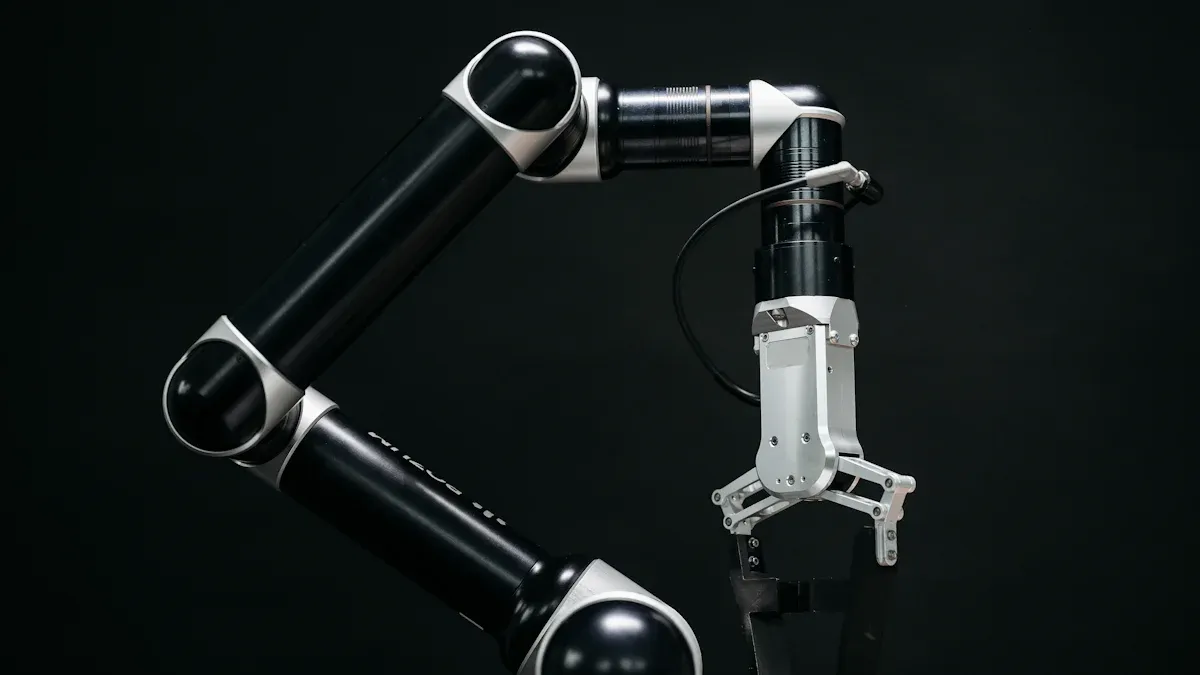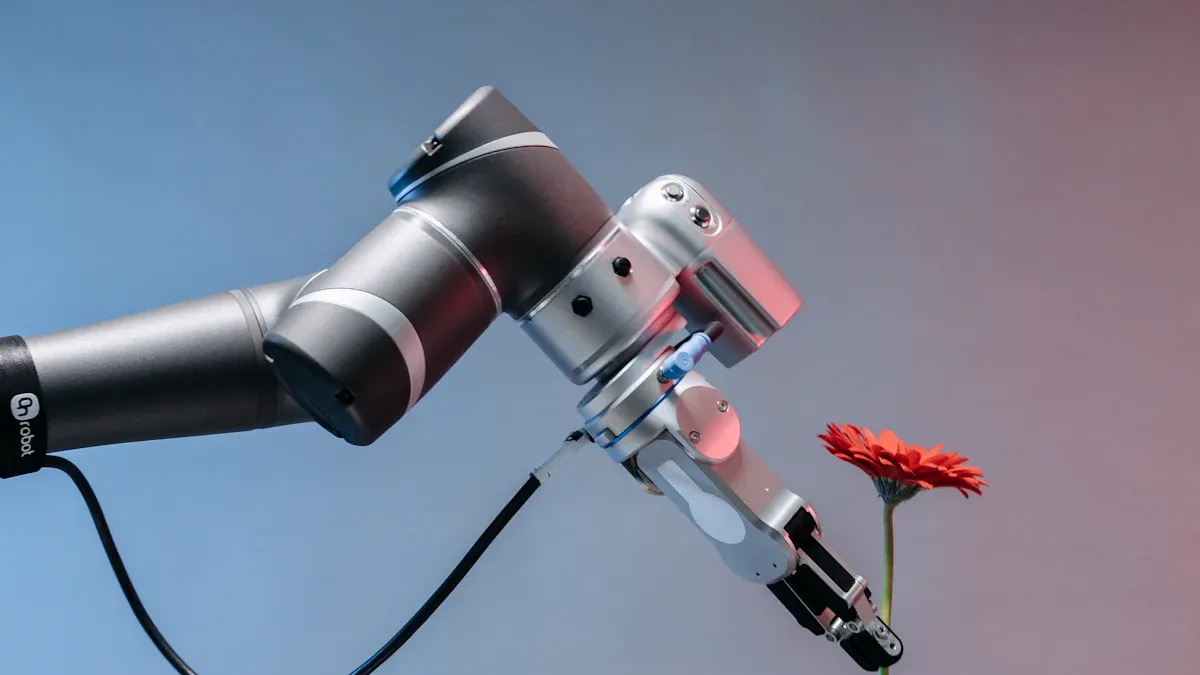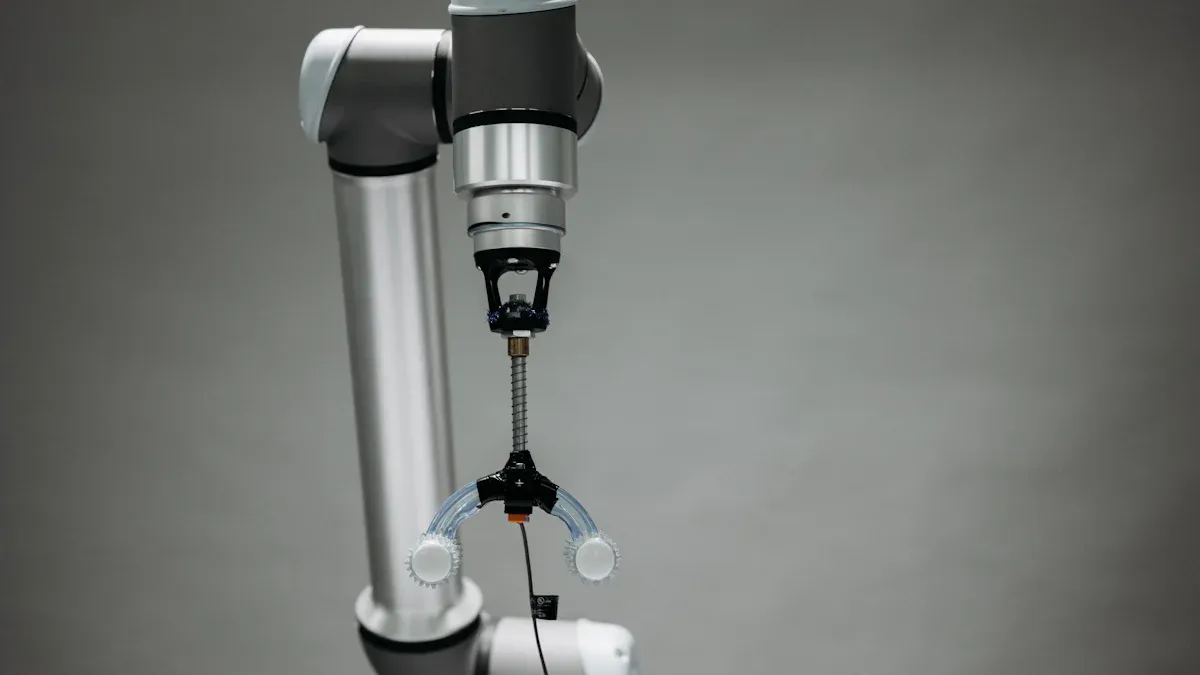May.
06, 2025
Contents
Precision in Miniature: CNC Machining for Micro Robots
Why Precision Matters in Micro Robots
CNC Machining Techniques for Micro Robots
Challenges in CNC Machining for Micro Robots
Benefits of CNC Machining for Micro Robots
Future Innovations in CNC Machining

When you think of micro robots, accuracy is very important. CNC machining helps make the small parts these robots need. It can create parts with tiny errors, measured in microns. This ensures the precision needed for delicate tools like medical devices. With mistakes less than 0.005%, CNC machining is very reliable. It helps micro robots do hard tasks again and again. This modern process lets you design and build detailed parts that drive new ideas forward.
Precision is key for micro robots to do unique tasks. These small robots are great for special jobs, especially in medicine. For example:
Tiny robots can do tricky tasks like delivering medicine to exact spots.
They can move deep inside the body to hard-to-reach places.
Smaller cuts during surgery mean patients heal faster.
Cool designs, like tiny magnetic drills, help with precise surgeries.
These abilities show why being precise is so important. Without it, these robots couldn’t handle such delicate work. CNC Machining makes sure every robot part is made just right to do these advanced jobs.
Micro robots need to work well every time to be useful. Their success depends on careful design and strong engineering. Studies show some important performance points:
| Metric/Statistic | Description |
|---|---|
| Accuracy and precision | Helps robots move exactly where they need to. |
| Compact design | Small and light, easy to fit into systems. |
| Ease of integration | Ready-made software makes control setup simple. |
| Data delivery speed | Sends fast data updates, great for quick actions. |
| Enhanced stability | Uses sensors to stay steady in tough spots. |
| Real-time responsiveness | Quickly adjusts to changes for smooth work. |
These points show how precision helps micro robots work well and stay reliable. CNC Machining makes parts with exact fits, so everything works perfectly together. This accuracy helps robots stay steady and react to their surroundings easily.

Making parts for micro robots needs multi-axis machining. This method moves the cutting tool in many directions. It helps create tricky shapes like curves and undercuts. These designs are important for tiny robot parts.
Multi-axis machining also improves accuracy by needing fewer setups. Fewer setups mean fewer mistakes, keeping parts the right size. For micro robots, even small errors can cause big problems.
| Benefits of Multi-Axis Machining | Description |
|---|---|
| Complex Features | Makes curves and undercuts for detailed designs. |
| Enhanced Precision | Fewer setups mean fewer mistakes in parts. |
| Dimensional Consistency | Keeps parts the same size for better robot work. |
Using multi-axis machining gives the exactness needed for tiny parts. It’s a key part of CNC Machining for micro robots.
Micro-milling is another important CNC Machining method for micro robots. It uses tiny cutting tools to make detailed parts. Careful control of cutting forces and settings ensures smooth and accurate results.
Studies show that 5-axis micromachining with fast spindles improves precision. Advanced tools like ANOVA and Fourier analysis help fine-tune the process. These methods make sure micro-milling creates the exact parts micro robots need.
| Aspect | Description |
|---|---|
| Cutting Forces | Controlling them improves accuracy. |
| Surface Quality | Smooth finishes help parts work better. |
| Optimal Parameters | Finding the best settings for perfect results. |
| Experimental Setup | Using advanced machines for better precision. |
| Data Analysis | Tools to improve how the process works. |
Micro-milling makes very detailed and accurate parts. This ensures micro robots work well in their special tasks.
Special tools are needed to make tiny robot parts. These tools handle small sizes and fragile materials carefully.
New ideas in tooling have made big improvements. For example:
Sensors in tools check flow and curing to avoid mistakes.
Special cooling channels in tools speed up work and improve quality.
Metal 3D printing makes better cooling systems for even temperatures.
These new tools help make high-quality tiny parts with precision. By using special tools, you can solve small-scale challenges and create better micro robots.
Micro robots often use delicate materials like thin metals or ceramics. These materials are light and useful but can break easily. Small mistakes in cutting speed or force may cause cracks or damage.
To avoid this, machining settings must be carefully controlled. Using slower speeds and special tools helps protect fragile parts. Cooling systems also prevent heat damage by reducing temperature. Even with these steps, working with fragile materials needs skill and accuracy.
Micro robot parts need to be very exact in size. Tolerance means how much a part can differ from its design. For tiny parts, even small errors can cause problems. Parts must often meet tolerances as tight as ±0.025 mm (±0.001″).
Different machines offer different levels of precision:
| Machining Process | Tolerance Level |
|---|---|
| Router | ± 0.005″ (0.13 mm) |
| Lathe | ± 0.005″ (0.13 mm) |
| Milling (3-axis) | ± 0.005″ (0.13 mm) |
| Milling (5-axis) | ± 0.005″ (0.13 mm) |
| Engraving | ± 0.005″ (0.13 mm) |
| Steel Rule Die Cutting | ± 0.015″ (0.381 mm) |
Keeping this precision needs constant checks and adjustments. Tool wear and heat changes can affect accuracy too. High-precision CNC machining ensures parts fit perfectly for micro robots.
Making tiny parts with CNC machining can cost a lot. Special tools, advanced machines, and skilled workers make it expensive. The process is also slow because of careful cutting and many quality checks.
Prototyping adds more challenges. Making one custom part takes time and setup, raising costs. But once the process is ready, CNC machining can produce many parts quickly. By planning well, you can save money while making high-quality micro robot parts.
CNC machining makes sure parts are made exactly right. This accuracy helps micro robots work as they should. It creates parts that fit together perfectly, even for tricky designs.
| Benefit | Description |
|---|---|
| Accurate parts | Tight tolerances make sure parts fit and work properly. |
| Durable materials | Strong materials make robot parts last longer. |
| Detailed designs | CNC creates complex shapes for more design options. |
| Quick production | Fast processes help with testing and making parts quickly. |
| Smooth finishes | Low-friction surfaces improve how parts move together. |
This accuracy and reliability help micro robots work well in tough jobs.
CNC machining is flexible for both testing and making many parts. You can easily change designs during development.
It helps test and improve designs quickly with prototypes.
Industries like aerospace and medicine use it for small-batch parts.
Car makers use CNC to create accurate test parts.
This flexibility lets you go from one prototype to mass production without losing quality.
Micro robots need detailed designs for special tasks. CNC machining is great for making tricky shapes like curves or undercuts.
You can also try different materials and finishes to improve designs. This makes micro robots work better and opens up new ideas for their use.

Artificial intelligence (AI) is changing how CNC machining works. It makes the process smarter and faster. AI can predict when tools will wear out and adjust settings. It also finds the best cutting paths to save time and materials. These features help make production quicker and reduce waste.
AI also makes factories safer. It takes over risky jobs, lowering accident chances. Machines with AI can run all day and night without stopping. This boosts production and speeds up delivery.
Here are some ways AI helps CNC machining:
Efficiency: Automates tasks for steady and reliable production.
Cost Savings: Predictive maintenance cuts repair costs by 25%.
Quality Control: Reduces defects by 50%, according to a 2023 study.
Flexibility: Adapts quickly to new production needs.
Industries like cars and planes are using AI in CNC machining. As AI improves, it will bring even better precision and productivity.
Nanotechnology is making CNC machining more advanced, especially for micro robots. It allows work at super small levels, creating very precise parts. This is important for the tiny pieces micro robots need.
Special tools like Scanning Probe Microscopy (SPM) and Atomic Force Microscopy (AFM) are used. These tools work at the atomic level for extreme accuracy. Methods like bottom-up and top-down approaches also improve designs and performance.
Nanotechnology also makes materials stronger and lighter. These materials are perfect for micro robots. With these improvements, parts become more durable and efficient.
Adding nanotechnology to CNC machining creates new chances for innovation. As this field grows, micro robots will become even better at doing complex and precise tasks.
CNC machining is important for improving tiny robots. It helps make exact parts so robots work perfectly. This method also makes it simple to go from testing to making many robots. It solves problems like weak materials and exact size needs. New ideas like AI and nanotechnology make it even better. These tools bring more speed and accuracy. With them, micro robots can do amazing things.
CNC machining is very precise and consistent. It makes tiny parts that fit perfectly. This helps micro robots do delicate jobs like surgeries or inspections without mistakes.
Yes, CNC machining can handle fragile materials like thin metals or ceramics. Special tools, slower speeds, and cooling systems protect these materials. These methods keep the materials safe while making accurate parts.
CNC machining lets you quickly make prototypes by changing digital designs. This makes testing and improving ideas easier without starting over. Once ready, the same process can make many parts, saving time and effort.
CNC machining costs more because it uses advanced tools and skilled workers. But its accuracy reduces mistakes and waste, saving money over time. Careful planning can help control costs while keeping high quality.
New tools like AI and nanotechnology will make CNC machining better. AI finds faster cutting paths and predicts tool wear. Nanotechnology works at super small levels for extreme precision. These advances will make CNC machining quicker and more accurate for micro robots.
Navigation
Navigation
Contact Us
Tel: +86 13417419143
E-mail: [email protected]
Add:
2nd Floor, Building 7, 156 High Tech Industrial Park, Fuyuan 1st Road, Zhancheng Community, Fuhai Street, Baoan District, Shenzhen City, China.